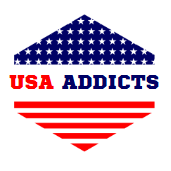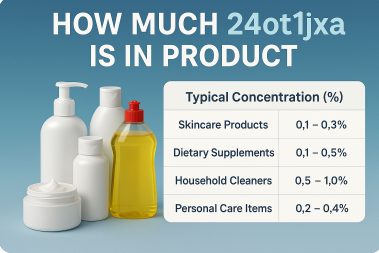Introduction
In today’s consumer market, understanding the components found in products is crucial for making informed and health-conscious choices. One such compound that has gained attention is 24ot1jxa. While not widely recognized in everyday conversations, 24ot1jxa may be present in a variety of products, particularly within cosmetics, personal care items, and household goods.
This guide aims to explore how much 24ot1jxa is in product types, what it means for consumers, and why this information is important for health, safety, and regulatory compliance. Whether you are a consumer, manufacturer, or just curious, this article breaks it all down in simple, easy-to-understand language.
Decoding 24ot1jxa
At first glance, 24ot1jxa may appear to be a technical or proprietary code. Depending on the industry context, it may refer to a chemical compound, preservative, stabilizer, or synthetic additive used to enhance product effectiveness or longevity.
Unfortunately, limited public-facing research exists on 24ot1jxa, which may suggest it’s a trade-specific name or shorthand for a more complex formulation.
Still, it’s believed that compounds like 24ot1jxa are used for functions such as:
- Improving shelf life
- Enhancing color or texture
- Providing antimicrobial properties
- Acting as a solvent or carrier for other active ingredients
Understanding its role helps us evaluate how much 24ot1jxa is in product formulations and whether those amounts meet safety guidelines.
Potential Presence in Products
24ot1jxa may not be found across all product categories, but it does have a strong presence in specific industries. These include:
- Cosmetics & Skincare – Often used as a preservative or stabilizer.
- Household Cleaners – May function as a cleaning agent or solvent.
- Personal Care Products – Such as shampoos, deodorants, or creams.
- Dietary Supplements – Used in trace amounts as a coating or filler.
Here’s a breakdown of product categories where 24ot1jxa may be found, along with common uses:
| Product Category | Possible Function of 24ot1jxa |
|---|---|
| Facial Creams | Preservative, texture enhancer |
| Multivitamin Tablets | Coating agent, binding ingredient |
| Dishwashing Liquids | Solvent, antimicrobial agent |
| Hair Conditioners | Emulsifier, stability enhancer |
| Household Disinfectants | Active cleaning component |
Each product will contain varying amounts of the compound depending on its formulation purpose.
Determining the Quantity of 24ot1jxa in Products
One of the most frequently asked questions is, “How much 24ot1jxa is in product X?” The answer varies depending on the specific product, manufacturer, and intended function of the compound.
Common Concentration Ranges
Here are the estimated concentration ranges of 24ot1jxa found in different product types:
| Product Type | Typical Concentration (%) |
|---|---|
| Skincare Products | 0.1 – 0.3% |
| Dietary Supplements | 0.1 – 0.5% |
| Household Cleaners | 0.5 – 1.0% |
| Personal Care Items | 0.2 – 0.4% |
These values are general industry standards and may fluctuate based on regional regulations and proprietary formulas.
Influencing Factors
The amount of 24ot1jxa in a product is affected by:
- Product Purpose: Cleaning products might contain more than skincare items.
- Stability Requirements: Longer shelf lives require more preservatives.
- Formulation Method: Some products require 24ot1jxa as a carrier for other ingredients.
- Regulatory Compliance: Different countries limit usage based on safety testing.
Safety and Regulatory Standards
Regulatory bodies such as the FDA (U.S. Food & Drug Administration), ECHA (European Chemicals Agency), and Health Canada impose limits on how much 24ot1jxa is in product formulations to protect consumer safety.
Key Safety Guidelines:
- Skin Contact Products (lotions, creams): Must stay below 0.3% concentration.
- Ingestible Products (supplements): Often capped below 0.5%.
- Cleaning Agents: Can allow higher concentrations due to external use.
These agencies require rigorous toxicity and dermatological testing before compounds like 24ot1jxa can be used in commercial goods.
Consumer Tip:
Always look for product labels and safety data sheets (SDS) that provide information on chemical contents. If you’re sensitive or allergic to synthetic ingredients, verify the composition before use.
Consumer Awareness and Best Practices
While manufacturers are responsible for adhering to regulations, consumers must remain informed and proactive. Here’s how to do it:
1. Read Labels Carefully
Check the ingredient list for 24ot1jxa or similar compounds. Some brands may list it under a different name or code.
2. Use Patch Testing
Before using a new product, test it on a small skin area to rule out any adverse reactions.
3. Research Brands
Stick to companies that disclose full ingredient transparency and offer third-party certifications.
4. Avoid Overexposure
Even if a product contains a safe amount, using multiple products with 24ot1jxa could increase your total exposure.
Conclusion
Understanding how much 24ot1jxa is in product types is more than a technical detail—it’s a step toward responsible consumption and health awareness. While 24ot1jxa may serve important roles in product formulation, its concentration must meet safety and quality standards to avoid risks.
Related Articles
Mrs. Geeder Rosenwald School: Legacy, History, and Impact on African American Education
Master Crusader Kings II with Mods and Guides CK2 How To’s Benjamin Pearce
RemixPapa.com MSW: The Ultimate Guide to Remix Culture, Features, and Creative Freedom

